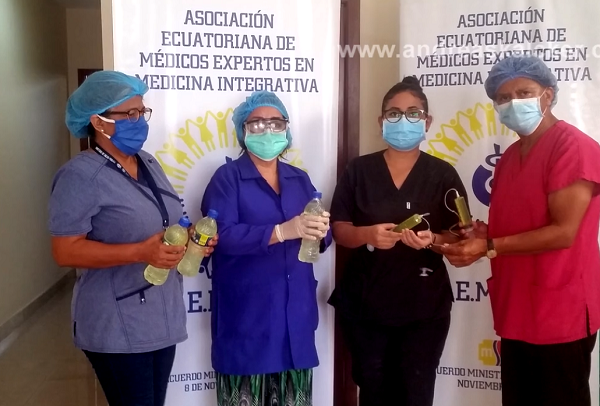
(Article republished from GreenMedInfo.com)
Not only has it been shown superior to aspirin for treating conditions linked with peripheral artery disease (intermittent claudication), but it has put the $29 billion dollar a year statin drug category to shame. At $5 for a month supply, you can understand why you haven’t heard it advertised on television or promoted through a conventional physician’s increasingly drug dispensary-like office.
And here is the kicker: while aspirin has been linked to 50 serious, if not life-threatening side effects,[i] and statin drugs to well over 300,[ii] policosanol was evaluated for safety in animal toxicity studies and was found to have no negative effects on carcinogenesis, reproduction, growth, and development at 1500 times normal human doses (on the basis of body weight).[iii] With such a low cost, and high margin of safety, it is unconscionable that more are not being made aware of it as an alternative to pharmaceuticals for lipid modulation.
It should be said before we continue, that while we do not subscribe to the intellectually bankrupt and vastly over-simplified "cholesterol hypothesis" of heart disease, if a patient feels compelled to lower cholesterol, or is pressured to do it for financial reasons (e.g. medical insurance premium hikes), they should at least have the option of doing so without poisoning themselves into disability, even death, which sadly, is increasingly the case.
In comparison studies policosanol has been shown either to be superior, or to compare favorably, to the following statin drugs:
Pravachol (Pravastatin) - 10 mg of policosanol given during evening meals for 8 weeks was capable of lowering LDL-cholesterol, (19.3%), total cholesterol (13.9%) and the ratios of LDL-cholesterol/high-density lipoprotein (HDL)-cholesterol (28.3%) and total cholesterol/HDL cholesterol ratio (24.4%).
In comparison, pravastatin, also administered at 10 mg during evening meals for 8 weeks, resulted in lowering LDL-cholesterol, (15.6%), total cholesterol (11.8%) without affecting the ratios of LDL-cholesterol/high-density lipoprotein (HDL)-cholesterol and total cholesterol/HDL cholesterol ratios -- clearly demonstrating the superiority of policosanol to pravastatin.
Moreover, policosanol and not pravastatin, significantly increased levels of HDL-cholesterol (18.4%) and reduced (p < 0.01) triglycerides (14.1%). Also, policosanol was more effective at inhibiting platelet aggregation induced by chemical agonists and arachadonic acid (a by-product of omega-6 metabolism).
Simvastatin/Lovastatin - Patients with a LDL cholesterol over 160 mg/dl were studied. They received either policosanol 10 mg/day (55 patients), lovastatin 20 mg/day (26 patients) or simvastatin 10 mg/day (25 patients). Serum cholesterol was measured again after 8 weeks of therapy. A 24% LDL cholesterol reduction was obtained with policosanol, compared with a 22% reduction with lovastatin and a 15% reduction with simvastatin. HDL cholesterol significantly increased in patients on policosanol and did not change in the other treatment groups.[iv]
Lipitor (Atorvastatin) - 10 mg of policosanol was compared to 10 mg of atorvastatin. After 8 weeks of therapy, policosanol lowered LDL-cholesterol 25.7% versus 41.9% for the drug. While atorvastatin was capable of suppressing LDL-cholesterol more dramatically, policosanol was shown superior in raising the HDL-cholesterol, as well inhibiting platelet aggregation.[v]
Also, LDL-cholesterol may have significant protective effects against cancer, infections and even heart attack itself. In fact, our research project has identified up to 30 conditions that may benefit from higher LDL cholesterol levels, illustrating just how misguided dramatic, drug-mediated suppression of cholesterol may actually be.
Additionally, policosanol has even been compared to another blockbuster class of cholesterol-lowering drugs, the fenofibrates, with the following positive result:
Bezalip (Besafibrate) - 10 mg of policosanol was compared to 400 mg of besafibrate, and after a 8-week course of treatment the policosanol group’s total cholesterol diminished by an average of 15%, LDLP cholesterol fell by 18%, triglycerides by 15%, while in the drug group a respective decrease was 8, 11 and 6%.[vi]
Policosanol has also been shown superior to the statin drug lovastatin in preventing experimentally-induced carotid artery lesions associated with atherosclerosis. [vii]
Research comparing policosanol to aspirin for another cardiovascular disease related complaint, intermittent claudication, is also compelling:
Aspirin - 10 mg of policosanol was compared to 100 mg of aspirin in 39 patients with intermittent claudication, a condition characterized by muscle pain (ache, cramp, numbness or sense of fatigue), which occurs after exercise, usually in the calf muscle. Policosanol was capable of significantly increasing walking distances, whereas aspirin had no discerned effect.[viii] Incidentally, policosanol has also shown favorable results when compared to the antiplatelet drug tricoplidine for intermittent claudication.[ix]
Another study found that 20 mg of policosanol was as effective as 100 mg of aspirin as a platelet inhibitor, but without the serious side effects associated with taking aspirin, e.g. headache, epigastralgia and nose bleeding.[x]
A final note on aspirin alternatives. A 125 mg dose of the pine bark extract known as pycnogenol has been clinically demonstrated in smokers to be as effective as 500 mg of aspirin as a platelet inhibitor, but without increasing bleeding time -- a difference that can mean life or death, when it comes to risks for hemorrhagic side effects associated with the use of blood thinners. .[xi]
Until the conventional medical establishment prioritizes safety, affordability and effectiveness over profit, policosanol will have few advocates within the medical professional caste. On the other hand, if these so-called "health" professionals do not find a place for natural substances for high cholesterol such as policosanol, can they really claim to be practicing medicine, or would it not be more accurate to describe it as glorified, applied pharmacology?
Read more at: GreenMedInfo.com
Please contact us for more information.






















